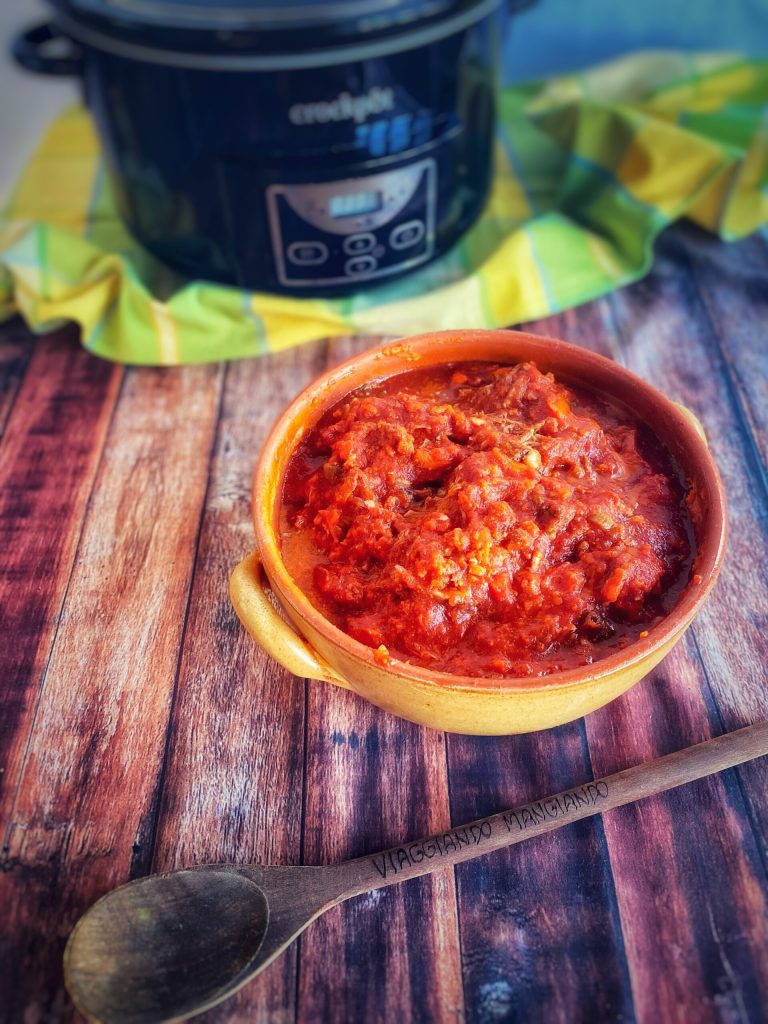The Pork rib ragù with slow cooker is part of the Slow Cooking Menu, from the column “Build the menu”.
The ragù is a sauce based on pieces or minced meat, cooked over low heat, usually with the addition of tomato.
The most popular ragùs are the Bolognese and the Neapolitan (Bolognese ragù is made with minced meat, Neapolitan ragù with whole pieces of meat).
The term derives from the French ragoût, a noun derived from ragoûter, meaning “appetizing, alluring”, and originally referred to stewed meat dishes, but generally mutton.
In Italy, it became the traditional accompaniment for pasta on festive days.
A common characteristic is the slow cooking over medium-low heat, so I opted for cooking with my Crockpot, the slow cooker in the photo.
My version is closer to the Neapolitan ragù because I choose to use whole pork ribs, making it more suitable as a second course rather than a pasta sauce.
You can choose to cook on high for 6 hours or low for 13 hours.

- Difficulty: Easy
- Cost: Economical
- Preparation time: 5 Minutes
- Portions: 6 people
- Cooking methods: Slow cooking
- Cuisine: Italian
- Seasonality: All seasons
Ingredients
- 2.2 lbs pork ribs
- 28.2 oz tomato sauce
- 1 onion
- to taste extra virgin olive oil
- to taste salt and pepper
Tools
- 1 Pot Crockpot
Steps
Sauté the onion in a pan, add the ribs, salt, and pepper. Deglaze with wine for a few minutes.
Place everything in the crockpot, add the tomato sauce. Adjust salt and pepper.
Cook on high for 6 hours or low for 13 hours.
Let cool and shred with hands combining the meat with the sauce.

Neapolitan Ragù
The French preparation of ragoût began to appear in Neapolitan cuisine from the 17th century, as a dish of rich tables made with beef or veal quality and still without tomato.
The word ragù is a distortion of the French term that reflects its actual pronunciation.
This is a typical distortion of the Neapolitan dialect that we also find in the terms: sartù, gattò, crocchè, purè.
The acquisition in the Neapolitan dialect of these terms derived from French, occurs precisely in the period between the 17th and 19th centuries when, under the reign of Ferdinand IV of Bourbon, there was a great influence of French culture and fashions in the Bourbon court

